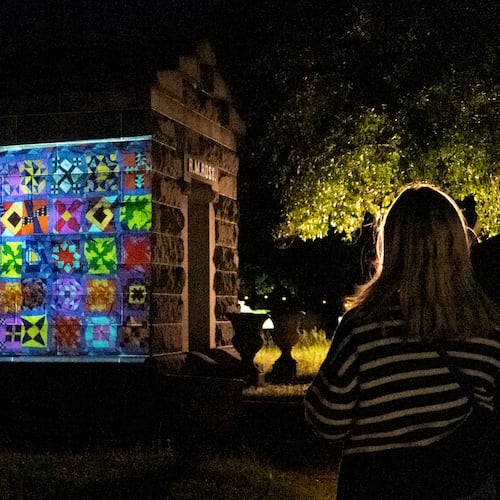The tension between the pull of home and the desire to escape it fuels the narrative drive in Odie Lindsey’s debut novel, “Some Go Home.”
The opposing poles in this tug-of-war is Pitchlynn, a small Mississippi town just south of Memphis, and Chicago. But tours of duty in actual wars, from the Battle of the Bulge to the conflict in Iraq, also figure in the mix.
The novel’s action primarily takes place in Pitchlynn, “the poorest slice of the poorest state in the nation. The most illiterate state. The fattest, the highest in teen pregnancy and the lowest in life expectancy. The most laughed-at and despised and written-off state.”
A large cast of characters from three family trees populate “Some Go Home.” The Hobbs are poor, white, blue-collar workers. They do the bidding of the Wallises, who are privileged landowners. “Shadow kin” to the Wallises is Gabe’s family, African Americans who were sold a tiny sliver of Wallis land during Reconstruction.
Jumping back and forth in time between 1964 to the present, the narrative dwells for a while with one set of characters before it passes on to another set of characters, and then on to another and back again.
The book begins and ends in the present with Colleen, an Iraq War veteran who suffers with PTSD and tries to mask it with drugs and alcohol. Thanks to her hairstylist friend Deana, Colleen begrudgingly finds some semblance of domestic stability with Derby Friar. Derby’s real last name is Hobbs, but he changed it to distance himself from his father, Hare Hobbs.
Now in his 80s, Hare Hobbs was suspected of the racially motivated murder of Gabe in 1964. Hare was exonerated by a court of law in the ’60s, but charges of jury tampering have recently surfaced and a new trial has been ordered.
Derby works construction for JP, a Chicago native who has recently moved to Pitchlynn with his infant daughter Lucinda. JP has laid claim to the Wallis family’s prized antebellum home, which he inherited from his late wife, Dru, and he has some disruptive renovation plans in store for the crumbling structure.
On the grounds of the home is a 130-foot magnolia tree planted in 1867. Perceived by civic leaders as a beloved symbol of the town, the tree has recently been christened “Bel Arbre,” and its image is set to debut in brochures promoting the town as a travel destination.
Credit: HANDOUT
Credit: HANDOUT
“Tupleo had Elvis. Tunica had gambling. Oxford had Faulkner and SEC football. In the absence of anything else, Pitchlynn had a handful of stellar antebellum houses, and above all a magnificent Magnolia grandiflora.”
But it was in the branches of that tree where JP’s wife Dru was involved in a traumatic event when she was a teenager. It resulted in her being banished from Pitchlynn, and she was haunted by it — literally — until her death.
The fate of the tree hangs in the balance between warring factions in Pitchlynn. The head preservationist is Dru’s aunt, Susan George Wallis, the self-appointed arbiter of what’s best for the town. Convinced, not erroneously, that JP has nefarious plans for his renovation of the mansion, she is eager to wrest it from his control.
And that’s not all. There’s lots more going on here. Hare’s first wife, Sylvia, may or may not have precipitated Gabe’s murder when she left Pitchlynn for Chicago. Their son Sonny, who has been long estranged from Hare, crashes his plane en route from Chicago to Pitchlynn to testify on his father’s behalf. Doc, a prison guard who’s married to Gabe’s granddaughter Jessica, is determined to avenge his wife’s family’s loss and inadvertently sets in motion a shocking event.
Lindsey has a visceral, captivating way with words. Listen to him describe a break in Chicago’s brutal winter: “And though it was still 27 degrees, though the streets were still soiled by salt crust, you stripped down to a thin sweater or thermal undershirt, your armpits ripe from cloister, and you eyeballed the city, the absence of fog and the steppe of squared rooftops returned to the horizon — “sky’s out” was the phrase, is the phrase — and your chest opened. Your pulse throttled. You knew that this city would soon become incomparable.”
And the book’s final chapter is a breathtaking piece of writing.
But beautiful prose alone cannot sustain a narrative overstuffed with so many storylines, traumatic events and characters that seem equally weighted. There are possibly at least two books in “Some Go Home.” I would have been content just to spend time with JP and Dru, who are the most well-developed and interesting characters of the lot. Dru’s desire to return to a place that rejected her and JP’s empty promises to appease her until it was too late is a fascinating plot on its own. What I wouldn’t give to see that story fully developed.
There’s also an issue with the character of Colleen. It’s obvious Lindsey can write a believable female character because Dru is so memorable. And perhaps stripping Colleen of any semblance of femininity was Lindsey’s intent. But even when she’s competing in a beauty pageant and nursing her babies, Colleen never rings true as a female character.
Lindsey is a beautiful writer, and he has some interesting things to say about how where we come from defines us. But in the end, all the effort it takes to keep his novel’s complicated family trees and storylines straight fails to pay off in a satisfactory way.
FICTION
‘Some Go Home’
By Odie Lindsey
W.W. Norton & Company
291 pages, $26.95
About the Author
The Latest
Featured


